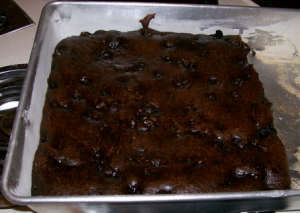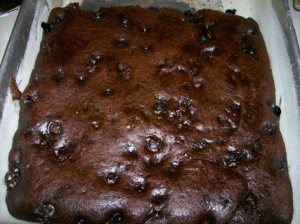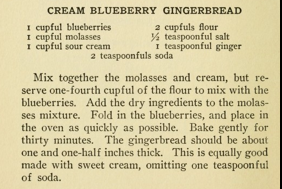Coffee Cake
Tuesday, July 21st, 2009Tonight I made Coffee Cake from a receipt in the March ’08 issue of “Good Housekeeping Magazine.” 1908, that is. This was on page 323, in a section dedicated to “Saving Without Sacrifice.” The savings in this receipt was that the cake required no egg or milk, a precious commodity for city dwellers during those times.
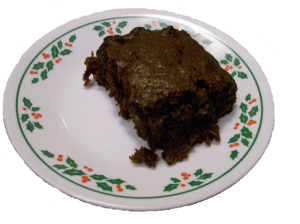
As with the Cream Blueberry Gingerbread receipt, this cake also appears to be chocolate. However, the dark color is due to molasses being one of its ingredients. When making this, I varied slightly from the original receipt below.
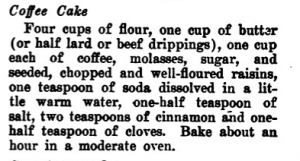
First, I only made half the batch, since I didn’t want to use four whole cups of flour. Next, I used only 1/4 cup of butter, and for the remaining 1/4 cup for the half batch, I used canola oil. (Much better than lard or beef drippings, anyway.) I didn’t chop the raisins, just left them whole. But I did take several tablespoons of flour from my 2 cups, for coating the raisins. This way, they don’t stick together when added to the batter.
And, of course, the pan must be greased and floured before adding batter to it. Since I was making half batch, and my 8×8 inch metal pan was thinner than ones used in 1908, I only baked this for 35 minutes in the moderate (350º F) oven. I thought it turned out very well.

